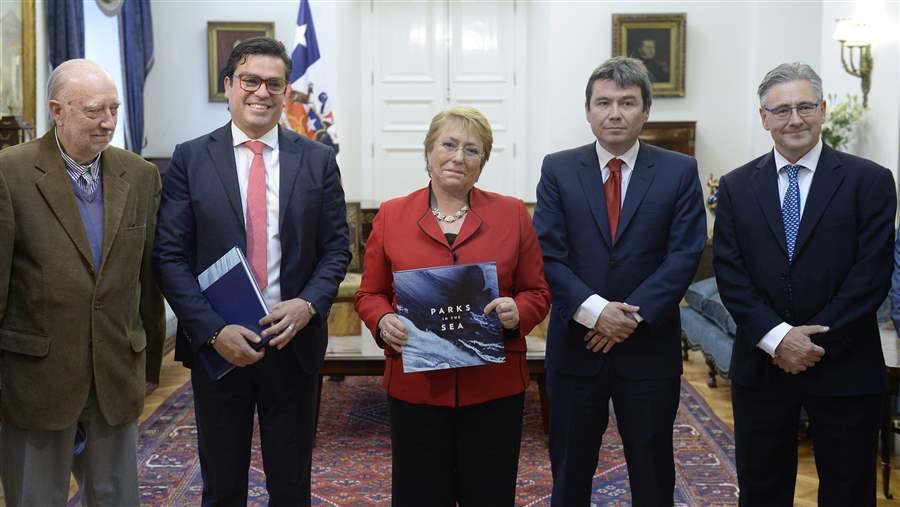Pew Marine Fellows, Advisers Meet With Chilean Leader
President Bachelet’s conservation legacy to include over 1.5 million square kilometers of marine protected areas

Chilean President Michelle Bachelet, with (from left) Juan Carlos Castilla, professor at Pontifical Catholic University of Chile; Maximiliano Bello, principal officer of The Pew Charitable Trusts’ international conservation project and adviser to the Pew Bertarelli Ocean Legacy Project; Marcelo Mena Carrasco, Chile’s environment minister; and Callum Roberts, professor of marine conservation at the University of York in Britain.
© Viviana Urra/MINRELChilean President Michelle Bachelet and her environment minister, Marcelo Mena Carrasco, met in the nation’s capital, Santiago, in October with past recipients of The Pew Charitable Trusts’ marine fellowships and program advisers.
Other attendees included Juan Carlos Castilla, professor at Pontifical Catholic University of Chile and a 1996 Pew marine fellow; Callum Roberts, professor of marine conservation at the University of York in Britain and a 2000 fellow; Daniel Pauly, a fisheries professor at the University of British Columbia, founder of the Sea Around Us project there, and a longtime adviser to the Pew Fellows Program in Marine Conservation; John Weller, photographer, author, and 2009 fellow; and Maximiliano Bello, principal officer of Pew’s international conservation project and adviser to the Pew Bertarelli Ocean Legacy Project.
The meeting illustrated the Chilean president’s commitment to using science to guide her ocean conservation leadership.
“Attention from a nation’s leadership is a true indicator of how the marine fellows program contributes to change in the broad sense of policymaking and ocean conservation,” Roberts said.
Bachelet’s conservation legacy is on track to include more than 1.5 million square kilometers (579,000 square miles) of marine protected areas (MPAs), which makes the country one of the top five globally in area of ocean protected.
“By designating these large MPAs, Chile is taking on a leadership role worldwide. The real challenge will be in taking good care of them through monitoring and by developing management plans,” Castillo said. “The country also has a real opportunity to provide marine education to Chileans and to nudge them to make better decisions environmentally.”
Polita Glynn directs the Pew Fellows Program in Marine Conservation for The Pew Charitable Trusts.








